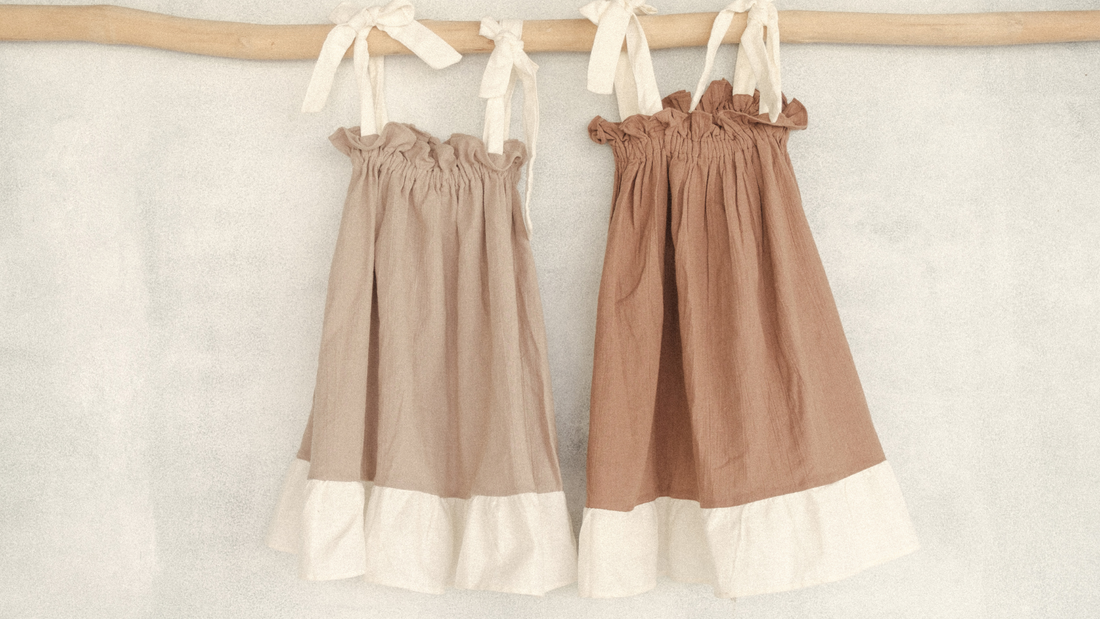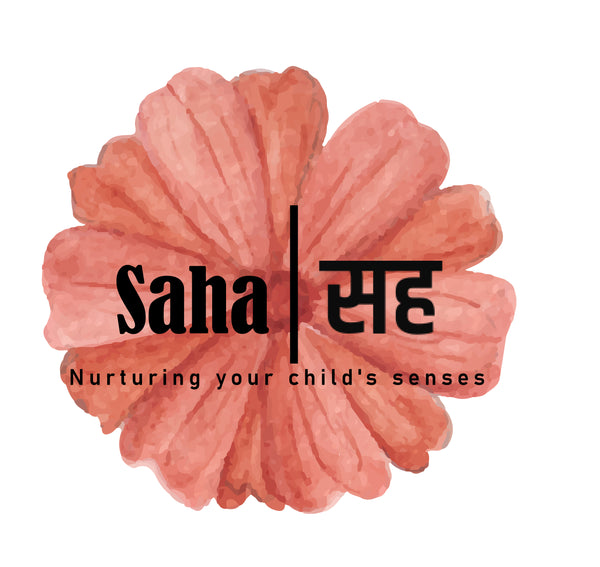
The philosophy of choosing the right outfits for our little ones
Share
What influences our decision to choose clothing for a child, be it our children or someone else's, is primarily guided by how we see children and what matters to us. One characteristic that undoubtedly goes hand-in-hand with our perception of children is 'cuteness'. So, we buy 'cute' attire for them with cute images, cute cartoon characters, and so on. Another side of the story is, that being 'cool' matters to us, we look for branded denim, T-shirts, dresses, etc. We also fall prey to gender biases that are sometimes conscious and other times unconscious. Unfortunately, before a certain age, children do not have much say in what they wear; by the time they do, they are already conditioned by our choices!
This blog post is about getting perspective on what is the best way to dress a child, not based on adult whims, fancies, and beliefs but based on certain education philosophies like Steiner or Waldorf Education and Montessori Education Systems that are founded upon respect for the spiritual aspect of our existence - the unseen part - unlike, the material aspect of our existence that can be seen very easily!
The Waldorf Philosophy of Clothing
Clothing is an essential part of the physical environment of a child. The Waldorf philosophy is based on educating the whole child with just the right amount of stimulation and guidance. Schools across the world, following Waldorf Education System, have the following things in common:
#1 Clothing should not be a distraction
If you graze through the majority of the market's offerings, you will see that most children's clothes are full of distractions in the form of loud colors, slogans, and designs. According to Waldorf Philosophy, shirts must be devoid of any text, advertising, logos, or graphics/characters, and should be sufficiently long to cover the midriff when arms are raised overhead. Solid colors, stripes, polka dots, plaids, and similar patterns are all acceptable.
The picture of even a natural thing on the shirt is discouraged, as it draws away attention from the face of the child. When opting for minimalist subtle clothing, the focus shifts to the child's face as the primary highlight. The attire should complement the face, enabling emotions and thoughts to be expressed through facial expressions rather than being overshadowed by the clothing itself.
#2 Clothing should be preferably of natural material
Nature plays an important role in Waldorf Education. In keeping with that, children are encouraged to wear natural fabric like pure cotton, and wool, which helps them stay comfortable according to weather conditions. According to the Waldorf philosophy, a child is considered a whole sense organ; everything that comes into contact leaves an impact. Clothing is something that is not just in touch with their physical bodies, it is an integral part of their personality, their temperament.
Color plays an important role in the sensory development of children. Therefore colors that occur in nature are encouraged. And if the clothing is naturally colored or dyed with natural dyes, nothing beats that! We must remember while choosing clothes for our children that colors have spiritual powers and meanings - this is supported by anthroposophy, the foundation base of Waldorf Education. Natural colors are very different from synthetic - to understand the difference, try holding a fabric colored using a vegetable or flower dye and a fabric colored using synthetic colors - your senses would perceive both very differently.
#3 Comfort is of prior importance
For young children, movement is of prior importance. Not only do they love to run around, jump, and move all the time, but also adequate movement is necessary for their development. What kind of clothes help in movement? The loose, comfortable kind. For the same reason, according to Yogasutra, we must not wear skin-fit clothes while performing Yoga poses. Clothes made of synthetic material also hurt the utterly soft skin of young children, thereby, making it uncomfortable for them to do what they are supposed to do - move and play. The glittery princess dress could be nice for a birthday photoshoot but wearing it, while playing could be a real pain!
The Montessori Philosophy of Clothing
The Montessori Philosophy is based upon the understanding that children have an absorbent mind. They are inclined to learn from within. Based upon its pillars of foundation, there is one core principle that guides aspect of clothing in Montessori homes and schools.
Functionality over anything else...
Basically, it says that when it comes to choosing clothing for our children, we must remember the functionality of clothing; why must they wear clothes? Simply put, the functionality of clothing is to protect the body; it is not to make your child look cool or cute. Like Waldorf philosophy, educators and parents, who believe in Montessori philosophy also choose beautiful, simple clothing that is practical and comfortable. It is emphasized that garments should fit properly without being overly constricting. I believe all children's attire should prioritize comfort to the extent that it's suitable for sleepwear. Items with elastic waistbands made from breathable cotton fabrics tend to offer superior comfort. It's essential to carefully consider the fabric's texture and sensation—does it feel pleasant, soft, and cozy, or is it rigid, harsh, and abrasive?
A few more things about choosing clothes...
We are living in times when every decision of ours, every decision we take related to our consumption, impacts generations to come. Thinking along that line, I feel that we must take into account factors like the impact of the cultivation of the fabric on the soil and our planet and the manufacturing processes. We do not live in a perfect world but we can try to do our best by choosing the best.
Discover our range of naturally dyed organic cotton clothing here.
